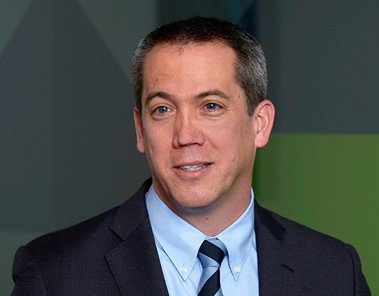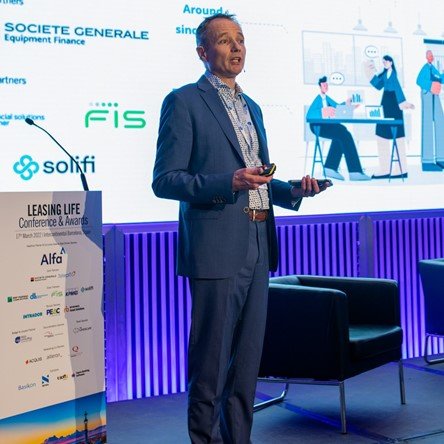Asset Inspections
No silver bullet to fighting leasing fraud but 5G offers hope
The Arena Television scandal that broke late last year sent shockwaves through the UK leasing market, leading to renewed calls for a nationwide system to be put in place to ensure such a wide-scale fraud can never be perpetrated again. But experts say there is no silver bullet in fraud prevention, especially when commercial pressures to close leasing deals take precedence. Che Golden reports.
O
ne of the more alarming aspects of the Arena fraud was how widespread the fresh-air asset-based financing was. With 55 lenders being caught up in the scandal, 46 of whom are listed by Kroll Advisory, who handled the insolvency, as having no recourse to assets, it is not unreasonable to ask if an asset register would have prevented the fraud from spreading so far within the industry?
With the UK’s Finance & Leasing Association (FLA) currently in talks to explore systems with technology providers, industry experts have warned a register on its own will not be enough to prevent Arena-scale fraud in the long term.
There needs to be greater communication within the industry to provide good quality data for such a register, there needs to be a backup system in place to investigate fraud, and most importantly the industry itself needs to re-think its approach to fraud.
“If you have a register of any nature, it is only as good as the information put in, and if even a small portion of people aren’t using it, it devalues the information contained within it,” says Roger Potgieter, partner at Shoosmiths.
“That means that unless everyone in the industry gets on board with whatever system is eventually implemented, it’s not going to have the impact it is intended to have.”
Roger Potgieter of Shoosmiths

Leasing companies also need to be prepared to act on the information a system is giving them when it detects fraud – a reluctance to do so seems to be a widespread cultural problem that is going to be hard to overcome.
Niels Spitters, CEO of Intrador, a Netherlands-based company that provides smart inspection systems for the heavy machinery industry, says that the mindset of the leasing industry needs to change.
“We have rolled our software out in 35 different countries and what we have learned is that the biggest stumbling block can be the mindset of the people inside the leasing companies,” he says.
“In the last two years, we have had many meetings because of Covid. People were interested to talk to us because our technology means that you do not need to send out physical inspectors, it can all be done online, which was perfect during the pandemic. Often, CEOs would come back to us and say they were frustrated because when they took the idea of our system back to their organisation, staff were resistant. People really need to start thinking in another way.”

Niels Spitters of Intrador
That other way translates as not making sales the sole focus of a company. “It is all about sales and the entire culture is too focused on getting a few deals on the books at all costs,” says Potgieter.
“There is this need for speed. A new potential deal comes in and you are told you have three other potential lenders, if you don’t turn this around in 20 minutes the customer is going somewhere else. It is possible that some companies want new deals on the books at the expense of everything else, and only worrying about fraud if and when it has happened.”
There is also the possibility, no matter how distasteful it might be to admit it, that some companies turn a blind eye to small scale fraud and see it as the cost of doing business.
“What I hear in the market is that some companies do not want to confront a large customer that might have an asset double financed,” says Spitters. “If people are paying their bills on time, the temptation is not to confront them. From a risk perspective, that is not a good way to work.”
Once you overcome a cultural reluctance to change a way of working and get numerous parties to agree to use the same system in sufficient numbers to make a registry worthwhile, there is a third problem – punishment.
There can be a reluctance to report fraud to the police. Many people feel embarrassed that they have been victims of fraud and there is also concern about how they are going to manage their public image if customers find out they have been defrauded. Once something is reported to the police it is in the public domain where information is harder to control. There is also the issue of getting the police interested enough to pursue a conviction.
“The police often do not have the appetite to pursue a case of fraud against a bank or a large company, they would often tell a victim to pursue a civil complaint rather than a criminal one,” says Potgieter.
NaVCIS
One solution around this, says Potgieter, would be to put in place a system like NaVCIS, the National Vehicle Crime Intelligence Service, which the FLA set up some years ago with the membership paying for a dedicated police force to fight motor and vehicle crime. It is limited at this stage to motor vehicle finance, but it is possible it could be extended to cover asset finance.
Simon Goldie, director of business finance and advocacy at FLA, disagrees that the industry is turning a blind eye to small scale fraud.
Simon Goldie of the FLA

“We take fraud and fraud mitigation seriously and we always have done,” he says. “We have a risk and fraud group that was established before I joined the FLA and its job is to identify fraud trends and develop solutions to deal with them. This includes cyber fraud. We run a fraud mitigation course every year that is very well attended, and we provide talks during the year.
“A register at some point could just become part and parcel of how things function when 5G really takes off, and then you have the Internet of Things,” he continues. “When you’ve got assets that are linked to 5G, it becomes much easier to have a register almost develop itself. We aren’t quite there yet with the technology, but in the future …”
IT, 5G and blockchain
Increasingly sophisticated databases and technology such as Artificial Intelligence (AI) are being used to combat the most common fraud problems faced by the industry, such as double financing.
But the technology development that could make life almost impossible for fraudsters is the implementation of 5G and blockchain technology. 5G will create a world where assets out on location talk constantly to the IT systems of leasing companies and lenders, while blockchain technology will capture all this data into a tamper-proof ledger.
One of the biggest problems in keeping track of assets outside the car industry is the lack of unique serial numbers, making it difficult to clearly identify construction, agricultural and production machinery.
PS Team, which has worked with the leasing industry in Germany and France to set up asset registers, has developed a platform that is able to reconcile even fragmented data on the identity of an object, using a workflow-based system.
"We train the system with every single data analysis that we do, and our system now recognises more than 400 standards of a serial number," said Frank Schottenheim, director financial institutions, PS Team. "We map the individual asset data from our participants with asset categories in the system."
All assets are registered in the database and compared with all existing data. PS Team checks various parameters such as property type, manufacturer, model and model or serial number. If the automated test run shows that data records match, users are informed by email and are also told what other funders are involved.
If a serial number is flagged, and all parties involved disagree as to what the asset is, it is marked as not being a match. They have ten minutes to compare and tell the systems it is not a real match. All parties then compare the specification for what they have on file, decide if it is a match or not and upload a qualifying statement. This creates a history that can then be reported on.
Schottenheim says the PS Team database drastically reduces the workload for their customers. It also holds all the data required for audits, such as master data (customer contact details), object data (serial number, manufacturer, model) and control parameters (order type, scope of testing, completion period). Customers can create an order for an audit which is sent to an examiner. PS Team then carries out the audit and all data and photos can be viewed via a web portal, as well as the test reports and inventory lists.
Artificial Intelligence
On the other end of the scale, Intrador has created an inspection app that simply requires lessees to take three photos of the asset and its serial number and confirm it is at their location. "For the user, it is really simple, but in the background, we are using AI to detect potential fraud," says Spitters of Intrador. "Our algorithm searches the whole picture and will compare photos to find patterns."
Intrador's AI recognises things such as what group the machine belongs, to, what condition it is in, and also a machine's individual parts. Any anomalies between the pictures being sent by the user and the specifications the lender has on record are instantly flagged.
Intrador's system also monitors human behaviour. "There is a certain pattern to how people do inspections," says Spitters. "If someone has leased 10 cameras, they simply take a photo of each item. But if one item is not there, the user has to think about how they are going to solve this problem, so they may open the inspection app, close it, then open it again. It will take longer to take photos as they really need to think about what they are doing, and we capture all that data.
“We can also tell if an asset is not where it is supposed to be if our algorithms show photos have been taken 500 meters away from where an asset has been registered. We save everything users do in the inspection app onto our servers and again, patterns are tracked. So, if 10,000 people are performing inspections in two minutes but one person took five, that is a red flag, and it tells a customer they need to pay attention to what this user is doing."
Spitters estimates that the inspection app saves 80 to 90 per cent of the costs of sending out external inspectors and automates the whole process. The system uses its parameters to decide which inspections deserve a red flag and these are the only inspections customers need to take action on.
Of course, while such technology is impressive, it has its vulnerabilities. No system can stamp out fraud completely – fraudsters will always find a way around any system. What could revolutionise anti-fraud systems is a combination of 5G and blockchain technology.
5G technology
5G will be a huge leap forward in comparison to 4G in that it will enable machine-to-machine communication, allowing more devices to connect simultaneously and creating an 'internet of things'. This means assets with sensors, processing ability, and software can connect and exchange data with other devices and systems over the Internet.
Connection speed will be greatly enhanced, allowing a much easier delivery of highly complex services, such as real-time video and audio streaming. It will also reduce connection response time (latency), allowing mobile devices to exchange information quickly.
Essentially, any asset out in the field can be linked back into a leasing company and a funder's IT systems, chattering away 24 hours a day and able to send a warning when data changes, instantly, signalling fraud as it is happening. 5G also has greater bandwidth, which is going to be essential to handle the growth in data produced by all these interconnected machines.
Blockchain
While the Intrador and PS Team approaches show that there are many different ways of interpreting and applying all this new data, blockchain technology can provide a permanent and tamper-proof record.
A blockchain works as a database managed by servers belonging to a peer-to peer network. These computers in the distributed network each keep a copy of a ledger that has two types of records – individual transactions and blocks.
The system creates the first block with a timestamp and a string of code called a hash. Blocks that are added to the ledger must use the previous block's hash to create their own. Before a new block can be added, the majority of nodes in the peer-to-peer network must agree that new block's hash is correct. This means all copies of the ledger are identical. But what is most important from an asset management viewpoint is that you cannot change a block – if someone attempts to tamper with the data an alert is sent to the network.
Since transactions performed on a blockchain cannot be tampered with, this creates an accurate, unchangeable record for asset managers to verify transactions with and vastly improved security.
Because every block is encrypted before linking it to the others, it minimises the impact of a data breach by distributing the records across multiple nodes. You could go as far as to say it is an un-hackable system, although hackers and would-be fraudsters might see that as their next challenge.
Potgieter adds: “The important thing to remember is that there is no silver bullet. Whatever the UK decides to put in place, fraudsters will find their way around it. They always do. The best thing companies can do is make themselves as unattractive to fraudsters as possible.”
Fraud prevention mindset